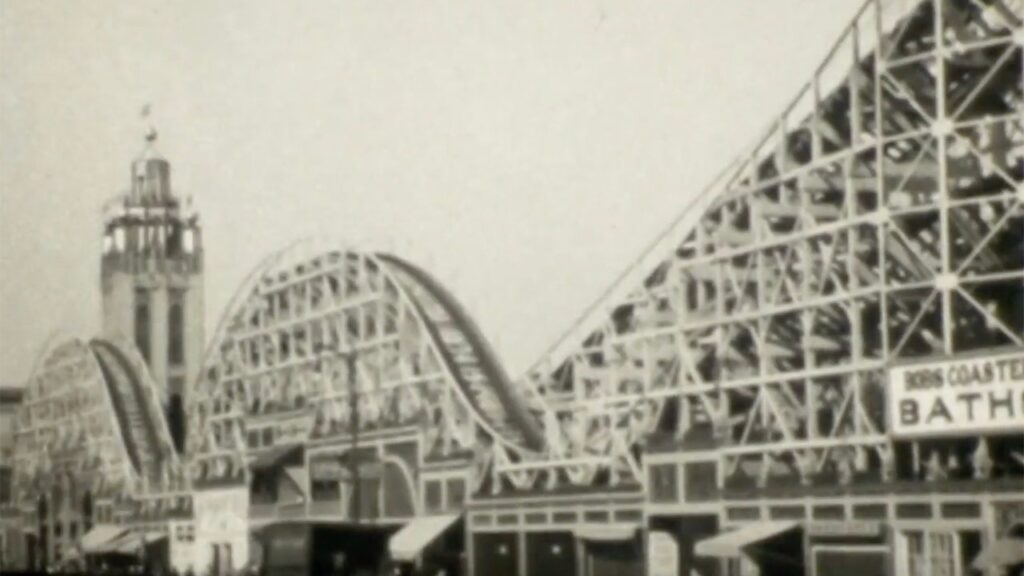On June 16, 1884, history was made when the first roller coaster in America opened at Coney Island in Brooklyn, New York. Created by LaMarcus Thompson, the Switchback Railway was a groundbreaking amusement ride that traveled about six miles per hour and only cost a nickel to ride. The coaster took passengers along West Tenth Street from Surf Avenue to the ocean.
The rollercoaster did not make a round trip loop, instead, it consisted of two sets of parallel tracks descending in opposite directions from elevated towers. Riders had to get out of their cars after they came to a stop and ascend a second 50-foot tower to board cars to head back. Despite its shortcomings, the ride was immensely popular and reportedly paid for itself during its first month of operation. Following its success, Thompson founded the L.A. Thompson Scenic Railway Company, which manufactured classic roller coasters and other rides for amusement parks worldwide.
Between 1897 and 1904, three amusement parks were established at Coney Island: Dreamland, Luna Park, and Steeplechase. By the post-Civil War years, Coney Island was already an established resort with theaters, restaurants, and a racetrack. In the 1920s, the area could be accessed by subway, and summer crowds flocked there for rides, games, sideshows, the beach, and the iconic two-and-a-half-mile boardwalk that was completed in 1923.
The famous Nathan’s hot dogs were invented at Coney Island in 1867 by Charles Feltman. In 1916, a former Feltman employee opened Nathan’s hot dog stand, which eventually became a Coney Island institution and international franchise known for its hot dogs and annual hot dog-eating contest held on the Fourth of July.
Despite losing some of its allure by the 1920s due to the advent of movies and radio, as well as the high costs of maintenance, Coney Island retained its iconic status with the opening of the Cyclone in 1927. This wooden roller coaster located at Luna Park reached a maximum speed of 60 miles per hour, carrying 24 passengers along a total track length of 2,640 feet.
In the 1970s, there was a campaign to save the Cyclone from being removed for aquarium expansion, ultimately leading to its reopening in 1975. Designated a New York City Landmark in 1988 and listed on the National Register of Historic Places in 1991, the Cyclone remains one of the world’s most famous roller coasters, attracting visitors from around the globe with its 85-foot drop and top speeds.
Today, Coney Island offers visitors a wide range of attractions, including an aquarium, amusement rides, restaurants, shops, and live entertainment. From roller coasters to go-karts, the iconic boardwalk games, and beachfront activities, Coney Island continues to be a must-visit destination for tourists and locals alike. While it faced a decline in the mid-1960s, recent revitalization efforts have restored its popularity and made it a thriving tourist hotspot once again, with the Cyclone still standing as a symbol of its rich amusement park history.












